‘Domus de Janas’ Underground Tombs Dated To 3400-2700 BC And Built By Ozieri Culture On Sardinia
A. Sutherland - AncientPages.com - Sardinia is one of the most ancient pieces of land in Europe with a rich legacy of prehistoric monuments. On the island, there are between 8,000 and 10,000 remains from the Nuraghi period (1900 and 730 BC) including circular guard towers, buildings, and cemeteries.
There are also prehistoric monuments called the ‘Domus de Janas’ (‘fairy houses’) or (“di gianas” (‘witches’ houses’), developed by a pre-Nuraghi culture of Ozieri, which flourished between 4000 BC and 3000 BC (or c. 3200 to 2800 BC. People of the Ozieri culture were busy with agriculture, sheep farming, stones- and metalworking.
More than one thousand 'Domus de Janas' tombs are scattered all over the island but most of them (about 480) are located in the province of Sassari, in northern Sardinia. However, this kind of ancient tombs, related to Sardinia, is only one of many that can be encountered on the island.
The 'Domus de Janas' tombs consist of rock-cut hypogeous structures, which were built underground or in rock faces. The largest of them is the Necropolis of Anghelu Ruju, in Alghero with funeral caves decorated with a light coat of red paint and stylized bull's heads, which are symbols of male fertility that represent the continuity of life. It is believed that the largest example, known as the Necropolis of Anghelu Ruju (with 38 tombs) that represents the pre-Nuragic style and tradition before the Nuragic civilization flourished on the island.
Based on archaeological findings reported from Sardinia excavations, it is important to emphasize that unique tools, evidence of metal-working, and objects discovered in individual huts of the Ozieri, suggest the culture was well organized and specialized.
Probably, the largest and most elaborate tombs with a monumental appearance belonged to chiefs or other prominent figures, and in this way, the structures bear resemblance to those, in Crete.
The Necropolis of Anghelu Ruju was discovered accidentally in 1903 and contains more than 12 separate complexes of graves dated back to 3300-2900 BC. Excavations exposed the remains of the dead, including those who were embalmed or cremated.
Carved into the granite rocks (less in limestone or basalt), the tombs consist of one or multiple, adjacent, circular rooms which are all connected by a central room. In their structure, they imitate ordinary homes decorated with columns, wood door frames, roof beams, alcoves, seats, and a religious symbol in form of false doors that signaled a passageway to the beyond.
The interior of the discovered chambers can vary from that of a rounded hut with a conical or triangular ceiling. The walls were usually decorated with reliefs showing the head of a bull or spirals that would symbolize the Mother Goddess and other religious symbols such as bull's horns and protomes (representing the foremost or upper part of this animal), a symbol of Taurus, who was believed to protect the sleep of the deceased.
The so-called Bucrania (the skull of an ox) sculpted in relief placed above the entrance to a subterranean tomb dated to Ozieri Culture of Sardinia (4,000 BC - Alghero, Sassari, Sardinia). Image credit: Marija Gimbutas
In Sardinia, there have been identified 116 rock-cut tombs with their walls covered with bucrania (depictions of cattle head and horns), which have long been considered as representations of a bull-like divinity. In old European art, the symbolic life energy, rising from the cow's or bull's head or sacred horns, represents reborn new life.
Other decorations of the walls include reliefs or etchings depicting magical and religious symbols such as spirals, and zig-zag motifs. A large number of funeral goods included vases, figurines, necklaces, utensils from daily life, and weapons, were found inside the chambers.
This ancient tradition testifies that ancient people of Sardinia believed in life after death and the resurrection of the dead. Death was viewed as a limitless sleep - an eternal sleep.
Written by - A. Sutherland - AncientPages.com Senior Staff Writer
Copyright © AncientPages.com All rights reserved. This material may not be published, broadcast, rewritten or redistributed in whole or part without the express written permission of AncientPages.com
Expand for referencesMore From Ancient Pages
-
 Dramatic Life Story Of Queen Marie Antoinette Executed By Guillotine During The French Revolution
Featured Stories | Oct 18, 2021
Dramatic Life Story Of Queen Marie Antoinette Executed By Guillotine During The French Revolution
Featured Stories | Oct 18, 2021 -
 Sirrush – Powerful “Glamorous Snake” Guarded Marduk But Did This Hybrid Really Exist?
Myths & Legends | Apr 29, 2022
Sirrush – Powerful “Glamorous Snake” Guarded Marduk But Did This Hybrid Really Exist?
Myths & Legends | Apr 29, 2022 -
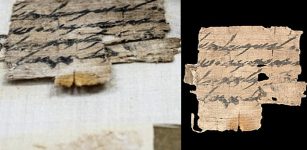 Unique 2700-Year-Old Papyrus With Inscription In Paleo-Hebrew Acquired By Israel From U.S
Archaeology | Sep 7, 2022
Unique 2700-Year-Old Papyrus With Inscription In Paleo-Hebrew Acquired By Israel From U.S
Archaeology | Sep 7, 2022 -
 Inghirami Tomb – Spectacular Etruscan Burial With 53 Alabaster Urns In Ancient City Of Volterra, Italy
Featured Stories | Apr 19, 2021
Inghirami Tomb – Spectacular Etruscan Burial With 53 Alabaster Urns In Ancient City Of Volterra, Italy
Featured Stories | Apr 19, 2021 -
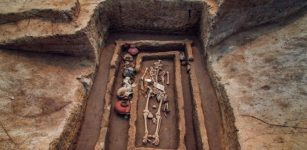 ‘Giants’ Discovered In Ancient Grave In China
Archaeology | Jul 6, 2017
‘Giants’ Discovered In Ancient Grave In China
Archaeology | Jul 6, 2017 -
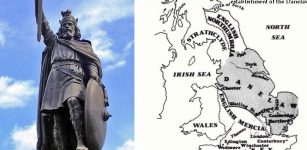 Anglo-Saxons Practically Eradicated Native Britons: The Question Is: Was It Ethnic Cleansing?
Archaeology | Jan 8, 2019
Anglo-Saxons Practically Eradicated Native Britons: The Question Is: Was It Ethnic Cleansing?
Archaeology | Jan 8, 2019 -
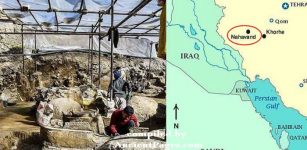 More Evidence Linked To Enigmatic Laodicea Temple In Nahavand Found By Iranian Archaeologists
Archaeology | Aug 7, 2020
More Evidence Linked To Enigmatic Laodicea Temple In Nahavand Found By Iranian Archaeologists
Archaeology | Aug 7, 2020 -
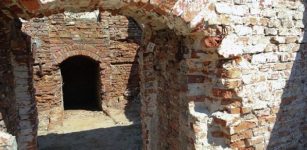 Mysterious Tunnel Found Under Saxon Palace Ruins In Warsaw, Poland
Archaeology | Sep 14, 2023
Mysterious Tunnel Found Under Saxon Palace Ruins In Warsaw, Poland
Archaeology | Sep 14, 2023 -
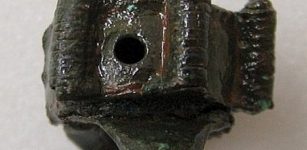 Bizarre Old Ring With License To Kill
Artifacts | Jun 29, 2014
Bizarre Old Ring With License To Kill
Artifacts | Jun 29, 2014 -
 Centuries-Old Authorship Mystery – Solved By Stanford Musicologist Jesse Rodin
Archaeology | Jul 18, 2022
Centuries-Old Authorship Mystery – Solved By Stanford Musicologist Jesse Rodin
Archaeology | Jul 18, 2022 -
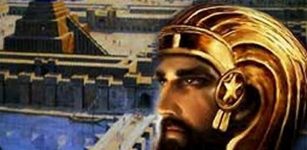 Legacy Of The Ancients: Cyrus The Great Cylinder – The Charter Of Human Rights
Featured Stories | Feb 17, 2014
Legacy Of The Ancients: Cyrus The Great Cylinder – The Charter Of Human Rights
Featured Stories | Feb 17, 2014 -
 Nail Polish Was Used In 3,000 B.C. – Color Of Fingernails Indicated Social Status In Ancient China And Egypt
Ancient History Facts | Jan 11, 2018
Nail Polish Was Used In 3,000 B.C. – Color Of Fingernails Indicated Social Status In Ancient China And Egypt
Ancient History Facts | Jan 11, 2018 -
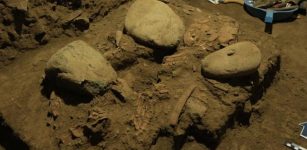 Mysterious Toaleans – Remains Of Unknown Humans Who Lived 8,000 Years Ago Discovered In The Leang Panninge Cave
Archaeology | Aug 26, 2021
Mysterious Toaleans – Remains Of Unknown Humans Who Lived 8,000 Years Ago Discovered In The Leang Panninge Cave
Archaeology | Aug 26, 2021 -
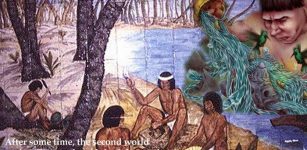 Creator God Kururumany Who Introduced Death Into The World And Deprived Humans Of Immortality
Featured Stories | Dec 19, 2016
Creator God Kururumany Who Introduced Death Into The World And Deprived Humans Of Immortality
Featured Stories | Dec 19, 2016 -
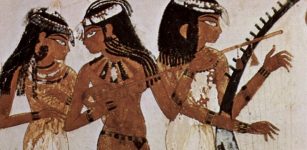 How And Why Did Ancient Egyptians Women’s Rights Change During The Greco-Roman Period?
Archaeology | Apr 16, 2019
How And Why Did Ancient Egyptians Women’s Rights Change During The Greco-Roman Period?
Archaeology | Apr 16, 2019 -
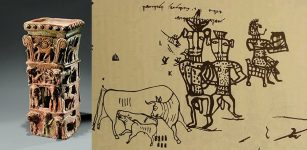 Ancient ‘Yahweh And His Asherah’ Inscriptions At Kuntillet ‘Ajrud Remain An Unsolved Biblical Mystery
Biblical Mysteries | Feb 12, 2021
Ancient ‘Yahweh And His Asherah’ Inscriptions At Kuntillet ‘Ajrud Remain An Unsolved Biblical Mystery
Biblical Mysteries | Feb 12, 2021 -
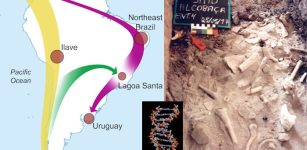 Unexpected And Surprising Results Of Ancient DNA Study – Who Were The First People In South America?
Archaeology | Nov 2, 2022
Unexpected And Surprising Results Of Ancient DNA Study – Who Were The First People In South America?
Archaeology | Nov 2, 2022 -
 Maat – Ancient Egypt’s Most Important Religious Concept
Egyptian Mythology | Apr 4, 2018
Maat – Ancient Egypt’s Most Important Religious Concept
Egyptian Mythology | Apr 4, 2018 -
 Brown Hares And Chickens Were Seen As Gods Not Food In Iron Age Britain
Archaeology | Apr 12, 2020
Brown Hares And Chickens Were Seen As Gods Not Food In Iron Age Britain
Archaeology | Apr 12, 2020 -
 Mysterious Rongorongo Script Remains Undeciphered – Does It Contain A Prophetic Warning?
Featured Stories | Mar 24, 2014
Mysterious Rongorongo Script Remains Undeciphered – Does It Contain A Prophetic Warning?
Featured Stories | Mar 24, 2014




